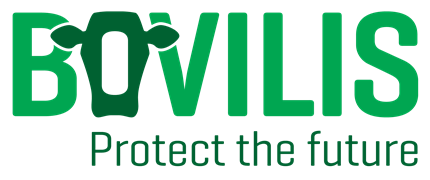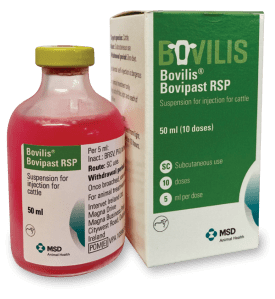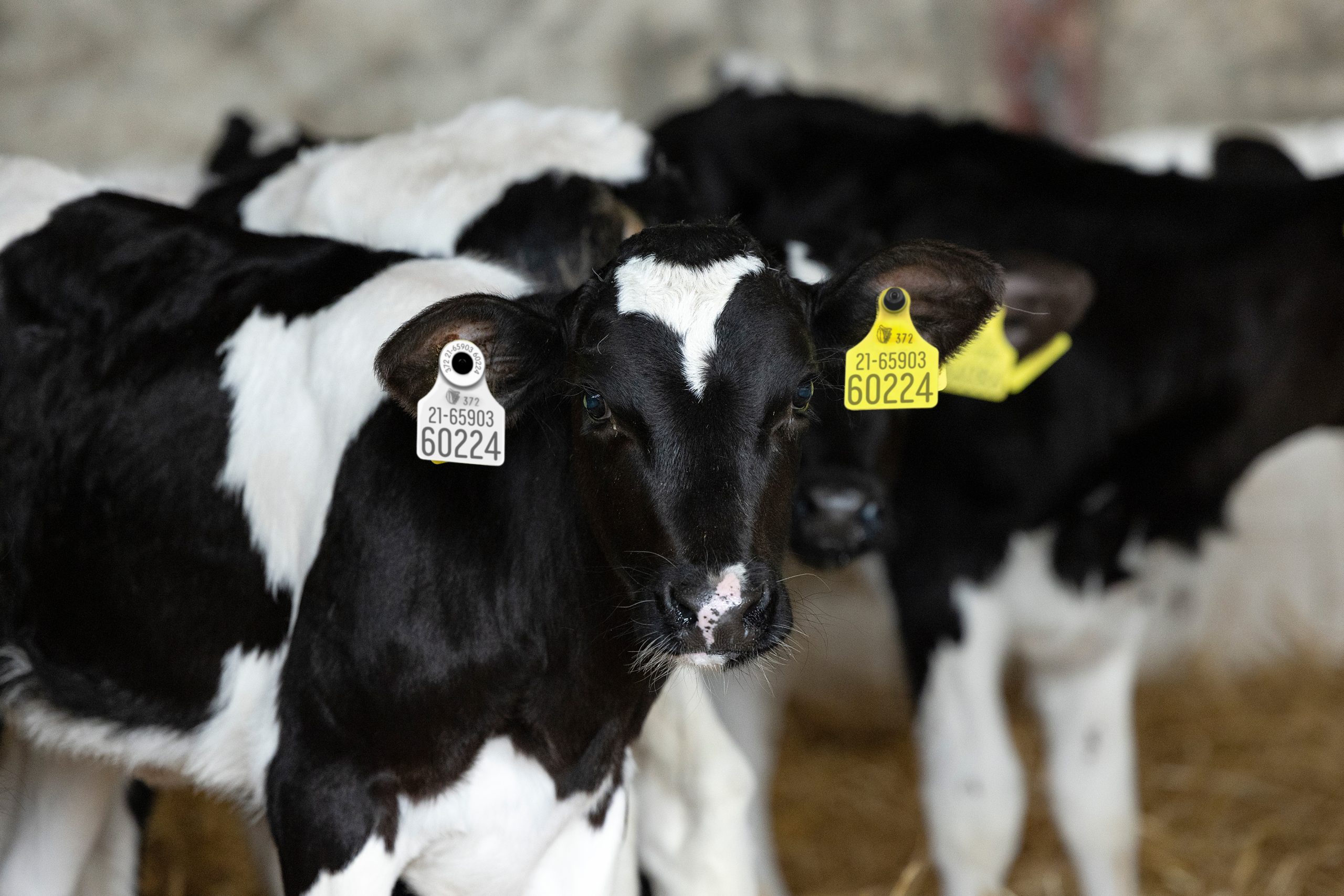

Pneumonia
Bovilis® Bovipast RSP
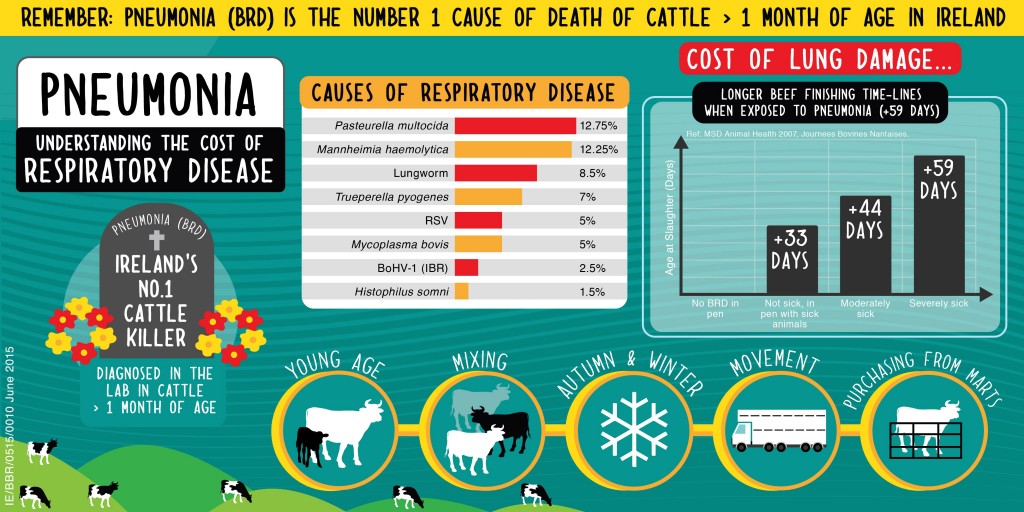
Pneumonia
Pneumonia in cattle is a common but serious disease that causes inflammation of the lungs. This multi-factorial condition affects cattle of all ages, especially those over one month old, and is the leading cause of death in these animals. It often occurs when a combination of viral, bacterial, and environmental stressors impact the animal’s respiratory system, making early diagnosis and treatment crucial.
What causes pneumonia in cattle?

Certain agents that cause pneumonia are naturally found in the animal’s upper respiratory tract without causing harm. Under stressful conditions, however, the balance changes, allowing these agents to multiply and spread to areas such as the lungs, where they cause pneumonia. In addition, high-risk periods in cattle often coincide with times when animals experience increased stress, like changes in weather, diet, or mixing groups.
| Viruses | Bacteria | Parasites |
|---|---|---|
| RSV BHV-1 Coronavirus PI 3 | Pasteurella multocida Mannheimia haemolytica Mycoplasma bovis | Dictyocaulus viviparus (hoose) |
The most common agents associated with pneumonia outbreaks in Ireland
How will you recognise pneumonia in cattle?
The cattle may seem off their feed, appear empty, and lack energy. In addition, they could show signs of panting, coughing, or a watery discharge from the nose. Moreover, they may have an elevated temperature (>39.5°C).
What can you do to treat pneumonia in cattle?
Most cases can worsen very quickly; therefore, the best course of action is to talk to your vet, who can advise you on the most effective treatment. Additionally, some new antibiotics reach a very high level in lung tissue and remain active for a prolonged period, thereby reducing the chances of relapses.
https://player.vimeo.com/video/328469644
How can you prevent pneumonia in cattle?
To prevent pneumonia in cattle, you need to minimize infectious pressure and maximize the animal’s immunity. This essentially, this involves reducing the exposure to infections and strengthening their ability to fight the bacteria responsible for pneumonia.
Minimise infectious pressure
- Avoid exposing cattle to stressful conditions to reduce the risk of pneumonia. Animals tend to find abrupt changes stressful, so it’s important to be mindful of these. For example, when weaning, it’s better to do it gradually rather than making sudden diet changes.
- Ensure that cattle sheds are well-designed and ventilated when animals are indoors. Additionally, avoid overstocking or mixing animals of different age groups.
- If you notice an animal panting or off-form try to remove it from the pen as it will act as a source of infection for other animals.
- When you buy in animals try to isolate them for a few weeks until you are happy they are not incubating infection.
Maximise the animal’s immunity
- Ensure the calf receives enough colostrum
- Vaccination
Vaccinating cattle before they contract pneumonia is an effective method for controlling the disease. The vaccine prompts the animal’s immune system to produce antibodies, which help the animal fight off infections when encountered. Bovipast RSP offers protection against both viral and bacterial causes of pneumonia. It defends against two viral culprits, RSV and PI3 viruses, and the bacterium Mannheimia haemolytica. Calves can begin vaccination from two weeks of age, with a program consisting of two shots given four weeks apart. Administer a booster dose before the next period of increased risk. Bovipast contains iron-regulated protein (IRP) antigens, which play a critical role in preventing bacteria from multiplying in the lungs. Since bacteria need iron to survive and reproduce, the IRPs in Bovipast help reduce the risk of Pasteurella bacteria multiplying. Farmers can administer Bovilis Bovipast RSP alongside Bovilis IBR Marker Live, providing a comprehensive protective solution.
Compatible with Bovilis IBR Marker Live
Farmers may need to vaccinate with Bovilis IBR Marker Live at the same time as Bovilis Bovipast RSP if IBR involvement has been detected on the farm or if the risk of disease introduction is high, such as when purchasing stock or animals return from shows or sales. A challenge study has proven that Bovilis Bovipast RSP and Bovilis IBR Marker Live are compatible.
Find out more about IRP Technology
Product Focus
Related Video
Related Articles
- Technology for Profit competition #TimeForTech
 We’re looking for Irelands most innovative dairy farmers! #TimeforTech Following the success of our Prevention for Profit campaign we’re excited to launch the “Technology for Profit” competition for 2025.
We’re looking for Irelands most innovative dairy farmers! #TimeforTech Following the success of our Prevention for Profit campaign we’re excited to launch the “Technology for Profit” competition for 2025. - Flies – Nuisance by name, nuisance by nature
 With temperatures slowly on the rise, next on the agenda – fly season. Impact on production and spread of disease Anyone who has worked with cattle during the summer months needs little reminding of the annoyance which flies can cause. They can be responsible for a state of unrest in the parlour for both cows … Read more
With temperatures slowly on the rise, next on the agenda – fly season. Impact on production and spread of disease Anyone who has worked with cattle during the summer months needs little reminding of the annoyance which flies can cause. They can be responsible for a state of unrest in the parlour for both cows … Read more - Reducing Abortion Rates in Your Flock: Enzootic Abortion of Ewes and Toxoplasmosis
 Eleanor Brady, MVB MRCVS, Ruminant Veterinary Manager, MSD Animal Health Many Irish flocks will experience a few abortions each year, but how many abortions is too many? Targets for abortion and overall empty rate are set at <2% and <5% respectively, although many flock owners accept rates higher than this. Approximately one third of lamb … Read more
Eleanor Brady, MVB MRCVS, Ruminant Veterinary Manager, MSD Animal Health Many Irish flocks will experience a few abortions each year, but how many abortions is too many? Targets for abortion and overall empty rate are set at <2% and <5% respectively, although many flock owners accept rates higher than this. Approximately one third of lamb … Read more
Sign up to Bovilis® product and event information
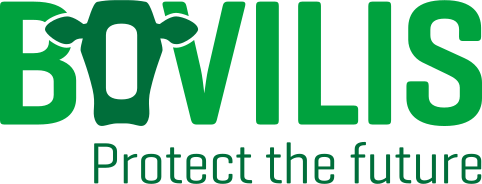
MSD Animal Health
Red Oak North, South County Business Park, Leopardstown,
Dublin 18, Ireland
vet-support.ie@msd.com
PHONE
